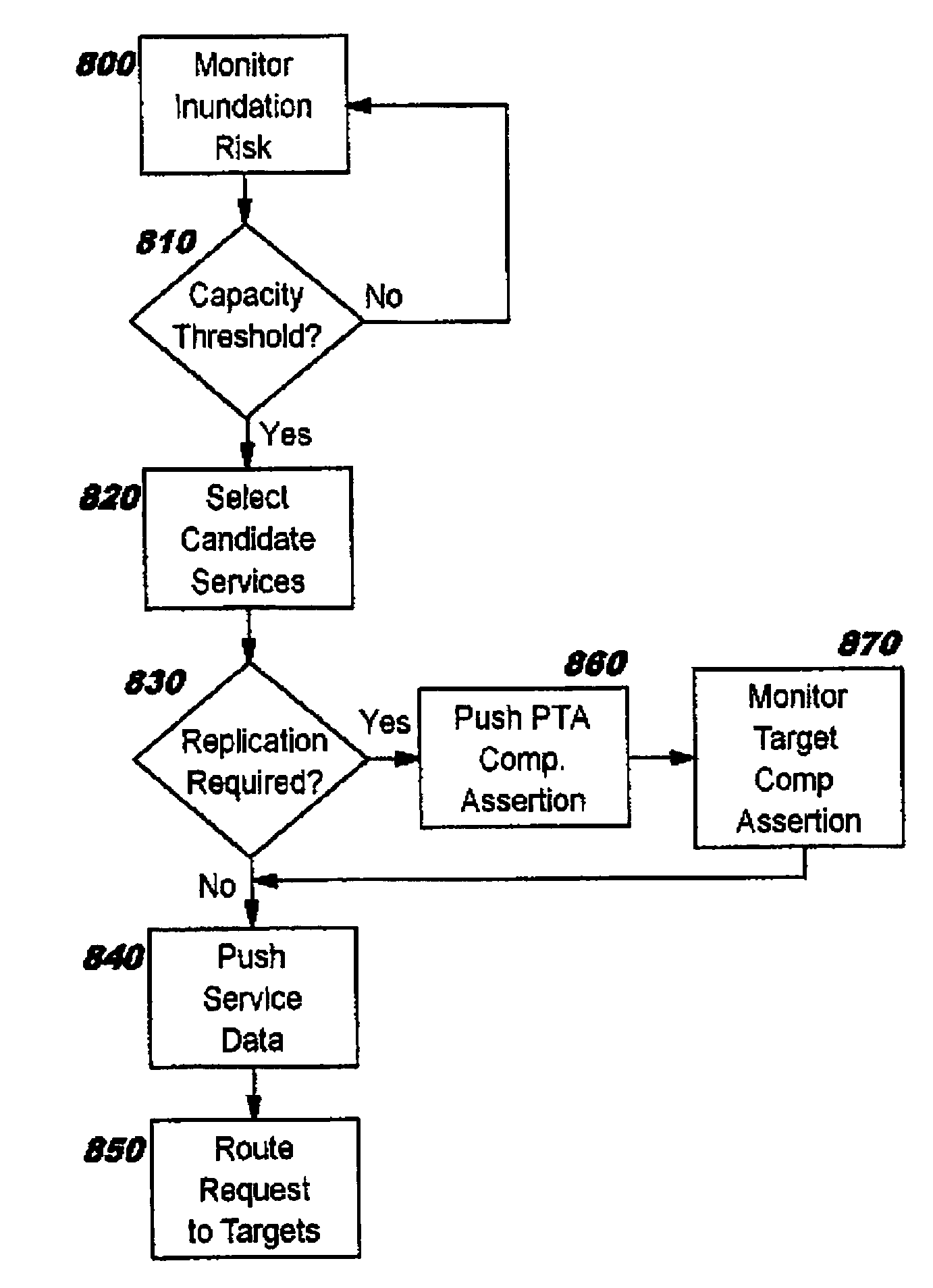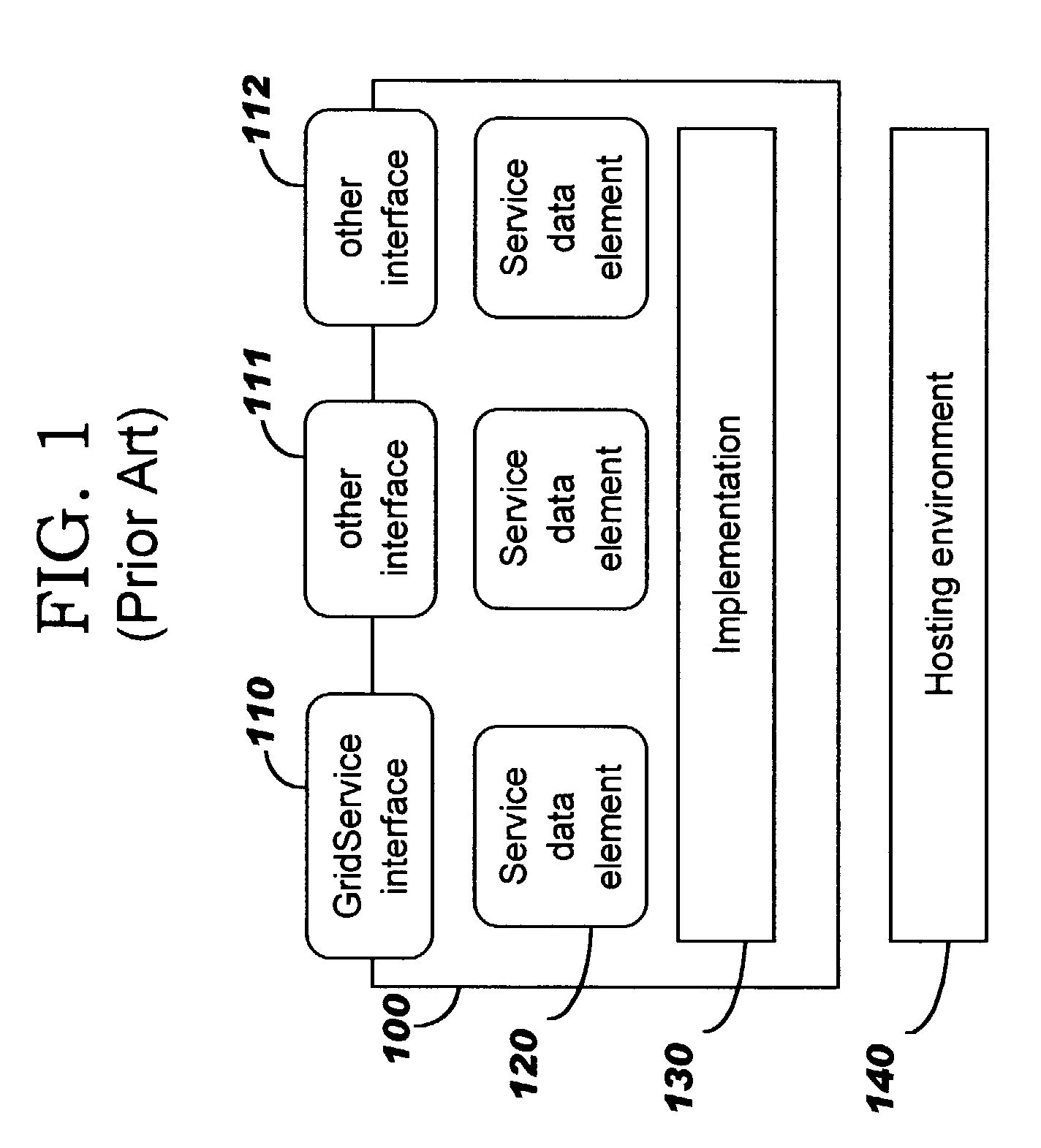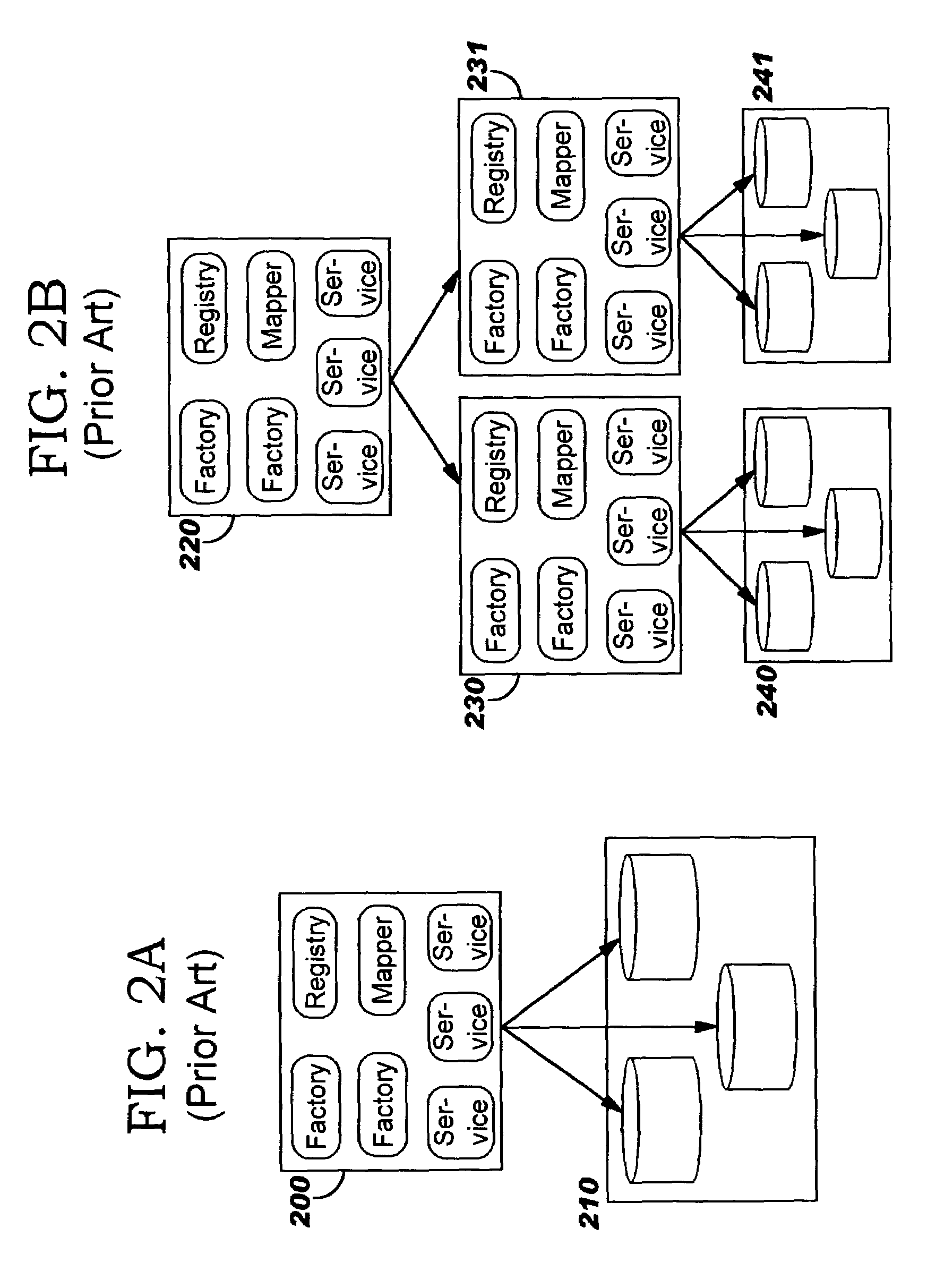Autonomic provisioning of network-accessible service behaviors within a federated grid infrastructure
a technology of federated grid infrastructure and network access, applied in the field of computer networks, can solve the problems of resource provided for some customers may occasionally experience a “web storm”, temporary surge in demand, and particular servers may experience a heavy request volume, and achieve the effect of leveraging resources more efficiently
- Summary
- Abstract
- Description
- Claims
- Application Information
AI Technical Summary
Benefits of technology
Problems solved by technology
Method used
Image
Examples
Embodiment Construction
[0035]The present invention defines techniques for leveraging autonomic, grid, and web services-related technologies, standards, and concepts to autonomically provision web service behaviors within a federated grid infrastructure. In particular, web service behaviors (that is, the code implementing the web service, along with the interface to the web service) are autonomically provisioned (i.e., dynamically distributed) via a grid of hosting services. In preferred embodiments, this dynamic distribution occurs in response to (and as a function of) external catalysts, such as algorithms that monitor designated resources (e.g., to proactively determine when a utility service provider's SLA commitments are in jeopardy).
[0036]A grid hosting service, as the term is used herein, is a service that manages the deployment and provisioning of various third-party utility services. (The term “utility service” refers to a provider that offers its customers on-demand, pay-per-use access to resourc...
PUM
 Login to View More
Login to View More Abstract
Description
Claims
Application Information
 Login to View More
Login to View More - R&D
- Intellectual Property
- Life Sciences
- Materials
- Tech Scout
- Unparalleled Data Quality
- Higher Quality Content
- 60% Fewer Hallucinations
Browse by: Latest US Patents, China's latest patents, Technical Efficacy Thesaurus, Application Domain, Technology Topic, Popular Technical Reports.
© 2025 PatSnap. All rights reserved.Legal|Privacy policy|Modern Slavery Act Transparency Statement|Sitemap|About US| Contact US: help@patsnap.com



